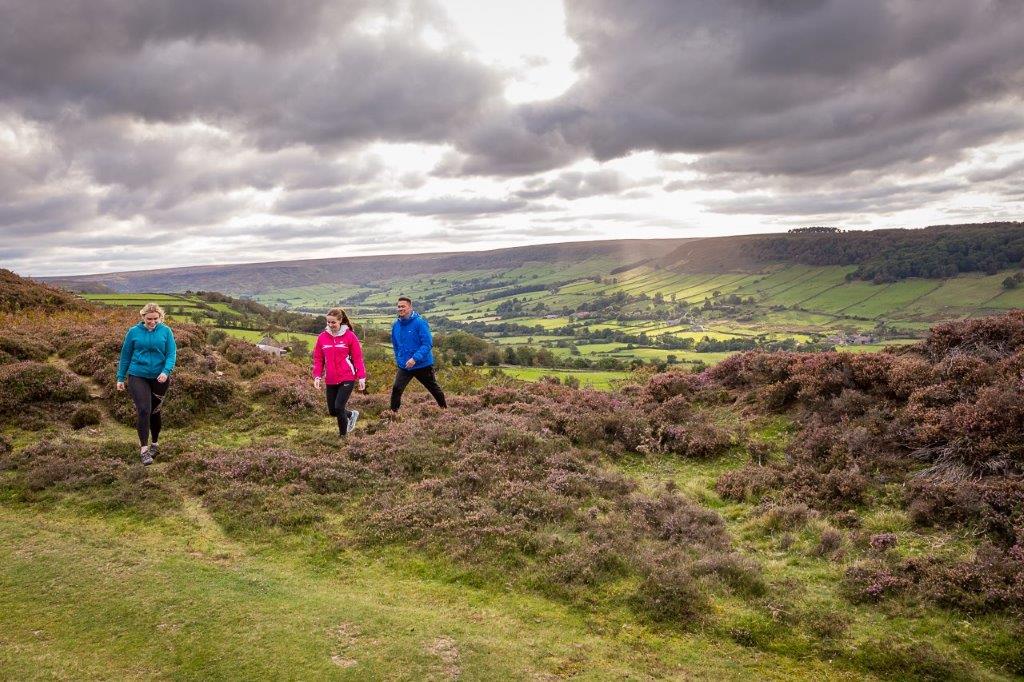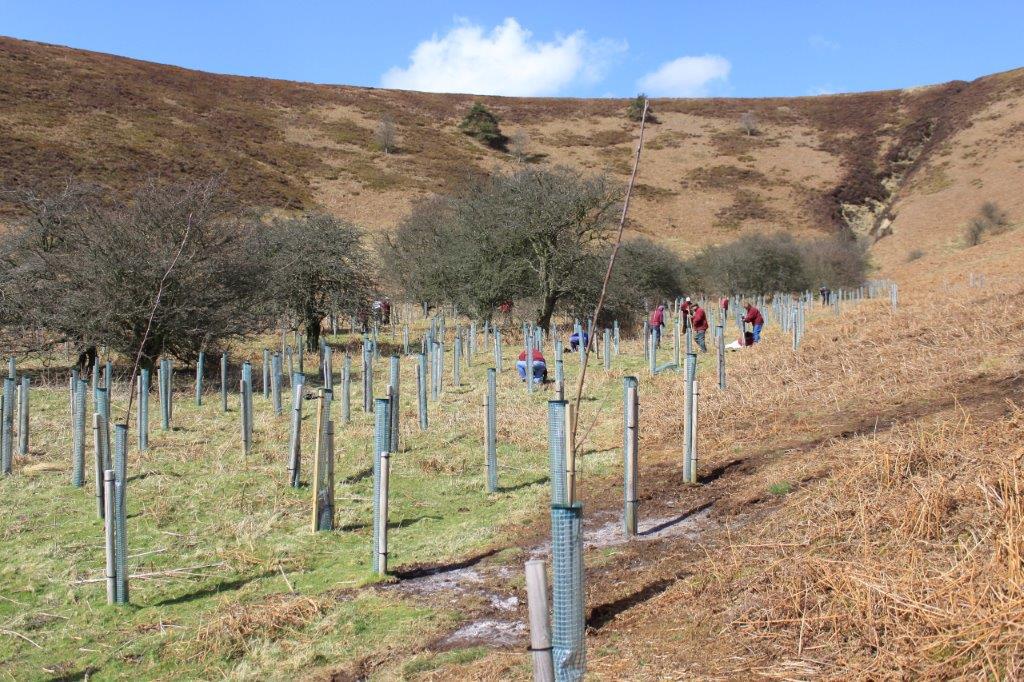Briony Fox – Director of Conservation
It is widely recognised that there are significant opportunities in our National Parks to address the dual challenges posed by the climate and biodiversity crises.
Resilient, biodiverse and ecologically functioning landscapes can provide a whole range of environmental and social services which enable wildlife to thrive, protect communities from environmental extremes such as flood, drought and fire and provide opportunities for recreation, enjoyment and employment for visitors and residents alike.
Through National Parks England, we have developed a Delivery Plan for Wildlife, to work together at scale to transform nature’s recovery with enhancements covering 10% of England. Over the next 10 years, we’re committing to delivering a nature recovery programme that:
- Identifies zones to deliver concentrated habitat enhancement and improved functionality
- Prioritises species to be safeguarded and re-introduced
- Increases tree cover and restores peatlands, grasslands, heathlands and other habitats, with the principle of right habitat, right place, right reason
- Provides nature based solutions to climate change resilience.
- Restores soil structure and health to improve function (carbon storage and water management)
- Implements long-term invasive non-native species control programmes
- Establishes buffer zones and green and blue infrastructure corridors linking our National Landscapes with National and Community Forests, and urban areas to create a genuine national network where everyone can access and experience nature and wildlife at their best.
Most land in National Parks is privately owned – and much of what is special has been created by farming. So we will continue to work through our strong local partnerships to co-create plans for nature with our farmers, landowners, and local communities, as well as our local statutory and voluntary sector partners. Along with farmers, landowners and local communities we know our landscapes intimately and benefit from a wealth of collective expertise – ecologists, planners, environmental scientists and rangers. We can work together to see opportunities to achieve sustainable change that supports the community and identifies investment in nature recovery to help support viable, high nature value, farm businesses.
But we also need the policies, funding and collaboration to support delivery, both locally and nationally. We have been actively working with DEFRA and Ministers to make National Parks part of the backbone of the national nature recovery network and strengthen the role of National Park Management Plans, so they are the local nature recovery strategies for National Parks, and back their implementation with stronger legal status.
To achieve this, we have asked that National Parks to be identified as priority areas for funding within the new scheme for Environmental Land Management (ELM) and we have been working with DEFRA on a range of Tests & Trials and through the Farming in Protected Landscape Programme to ensure that public funding for public goods offers a sustainable funding model delivering mutual benefits for farmers and land managers as well as for nature.
The new National Peat Strategy and English Tree Strategy fully recognise the need for positive action in National Parks and we have asked for a strengthened ‘section 62’ duty to be included in the Environment Bill to place on all public bodies, a clear duty to help deliver the nature recovery network, along with further legislation to create powers to promote and protect nature in National Landscapes on a par with built heritage or road transport.
There must also be an evidence based approach to delivering Nature Recovery and a common template and set of nature recovery indicators to assess the status of nature and natural capital is needed so that recovery can be robustly and confidently measured.
Finally, this work can’t happen without resources; so we continue to champion the necessity for a sustainable finance model blending public, private and 3rd sector funding to enable objectives to be delivered and more importantly, sustained and monitored.
Our new management plan will direct our work in future to achieve our objectives of realising a more resilient and naturally functioning ecosystem, teeming with sustainable, healthy communities of wildlife and working hard to offer a range of ecosystem services to benefit nature and our health and wellbeing.












“Resilient, biodiverse and ecologically functioning landscapes can provide a whole range of environmental and social services which enable wildlife to thrive, protect communities from environmental extremes such as flood, drought and fire and provide opportunities for recreation, enjoyment and employment for visitors and residents alike.”
Diversity is a current buzz word in conservation. Allowing the un-biodiverse heather moorland to revert to woodland – which it would do if the grouse shooting industry would allow it, and in 50 or so years would achieve a more species rich habitat, as well as meeting some of your stated objectives such as allowing more recreational spaces, decreased run-off (‘slow the flow’), far more effectively than the intense moorland management, which makes the the peat to more susceptible to run off into both the Rye catchment & the Esk catchment.
I I was born within the national park and have always enjoyed our heather moorland. But:- The moorland landscape has become far more intensively managed since the 1960s where grouse shooting & ‘moorland management’, was far less intensively carried out than it is at the moment. There were once large areas of unburnt mature heather and many moors rarely if ever had any had driven grouse shoots. Now almost every part of our heather moorland is shot over and managed to within an inch of its life simply for the benefit of grouse. (Any other wildlife benefits are incidental). As a youth burning off was far less frequent and I rarely if ever came across keepers traps, snares or other methods of keeping predators at bay. Now the use of traps and other methods of predator control across our moors is both widespread, visible and frequent. I’m not sure this can be classed as sustainable conservation.
Our moorland is often the location where dead birds of prey, such as hen harriers and buzzards are found and in one recent incident a moorland keeper at Goathland was filmed trapping & killing a goshawk using an illegal lure trap. Yet I am not aware of any condemnation by our park, of this sort of illegal persecution.
As you know the heather dominated moorland we have is a man made environment caused by a combination of climate change and overgrazing in the Bronze and other age. Allowing it to return to its natural state would achieve far more of your stated aims & objectives than anything your can do elsewhere in the park. Sure I’d miss our open moorland but the advantages of returning it to become Britains largest area of woodland for the many, would far outweigh the so called benefits of simply allowing it to be operated as a grouse shoot for the few.
Please make sure to send in your thoughts to the current Management Plan review process – https://www.northyorkmoors.org.uk/looking-after/new-management-plan, or just say and we can pass them on for you.
One thing – the North York Moors National Park Authority condemns illegal actions including all wildlife crime – https://www.northyorkmoors.org.uk/looking-after/wildlife-crime